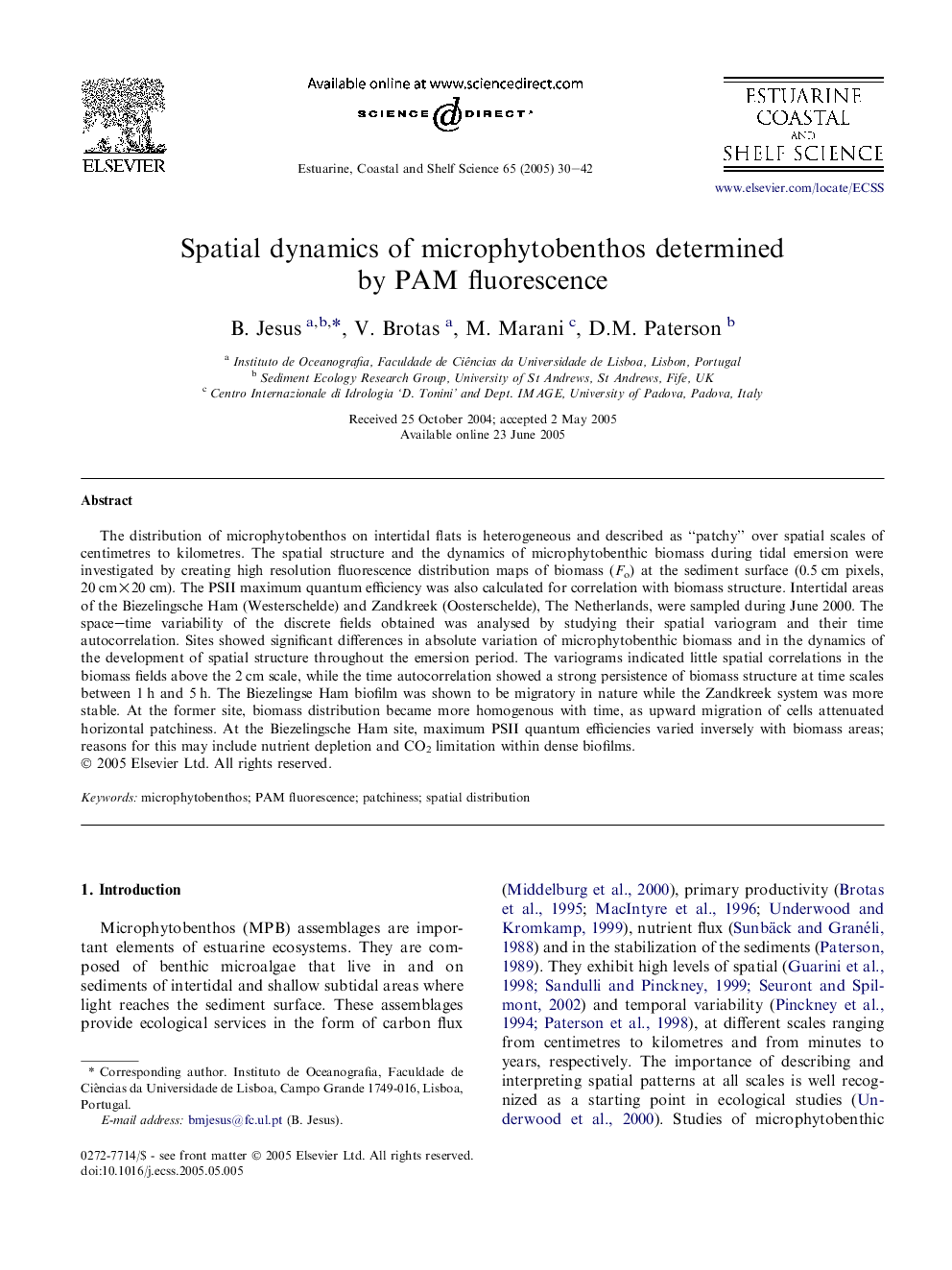| Article ID | Journal | Published Year | Pages | File Type |
|---|---|---|---|---|
| 9480650 | Estuarine, Coastal and Shelf Science | 2005 | 13 Pages |
Abstract
The distribution of microphytobenthos on intertidal flats is heterogeneous and described as “patchy” over spatial scales of centimetres to kilometres. The spatial structure and the dynamics of microphytobenthic biomass during tidal emersion were investigated by creating high resolution fluorescence distribution maps of biomass (Fo) at the sediment surface (0.5Â cm pixels, 20Â cmÃ20Â cm). The PSII maximum quantum efficiency was also calculated for correlation with biomass structure. Intertidal areas of the Biezelingsche Ham (Westerschelde) and Zandkreek (Oosterschelde), The Netherlands, were sampled during June 2000. The space-time variability of the discrete fields obtained was analysed by studying their spatial variogram and their time autocorrelation. Sites showed significant differences in absolute variation of microphytobenthic biomass and in the dynamics of the development of spatial structure throughout the emersion period. The variograms indicated little spatial correlations in the biomass fields above the 2Â cm scale, while the time autocorrelation showed a strong persistence of biomass structure at time scales between 1Â h and 5Â h. The Biezelingse Ham biofilm was shown to be migratory in nature while the Zandkreek system was more stable. At the former site, biomass distribution became more homogenous with time, as upward migration of cells attenuated horizontal patchiness. At the Biezelingsche Ham site, maximum PSII quantum efficiencies varied inversely with biomass areas; reasons for this may include nutrient depletion and CO2 limitation within dense biofilms.
Related Topics
Physical Sciences and Engineering
Earth and Planetary Sciences
Geology
Authors
B. Jesus, V. Brotas, M. Marani, D.M. Paterson,
